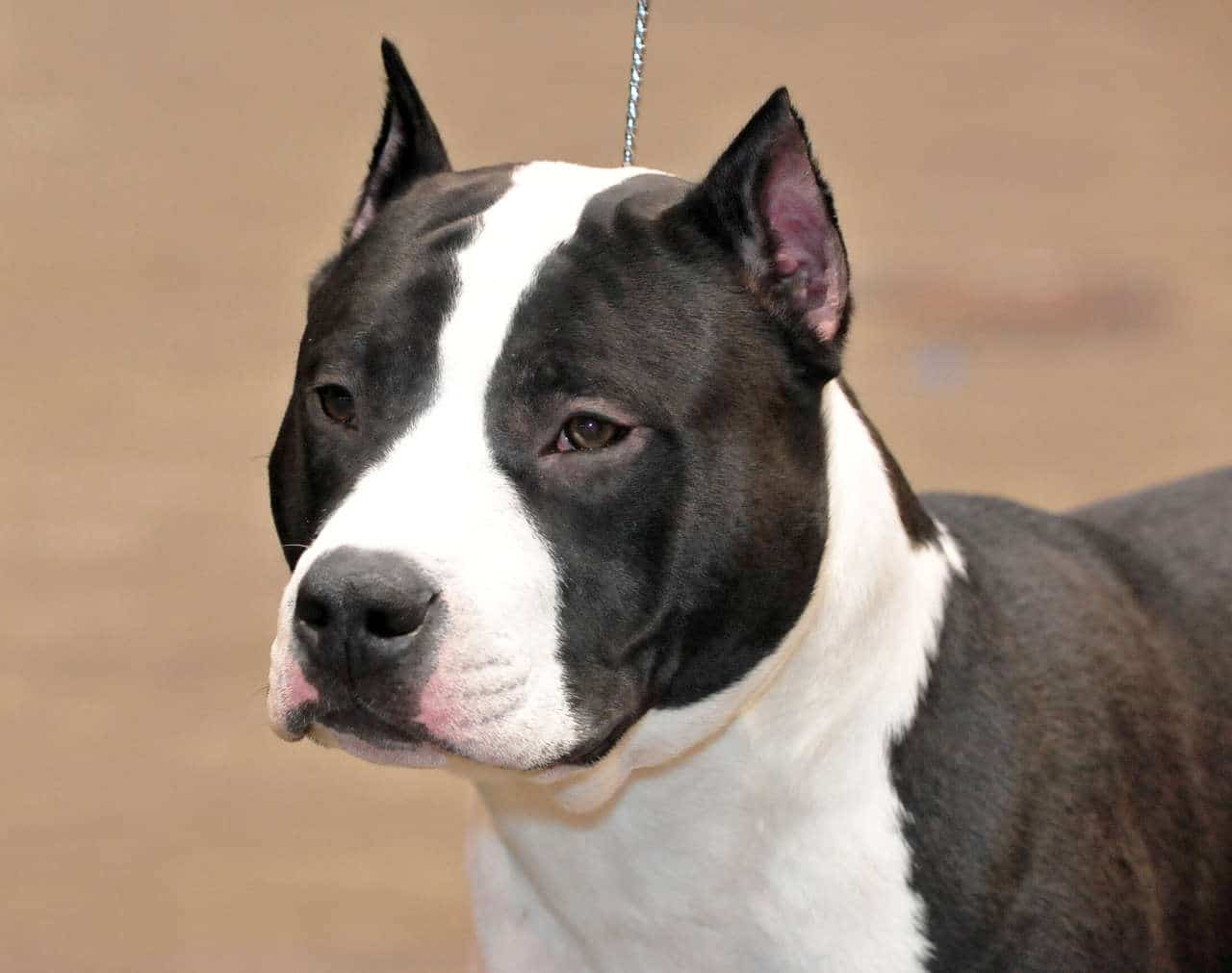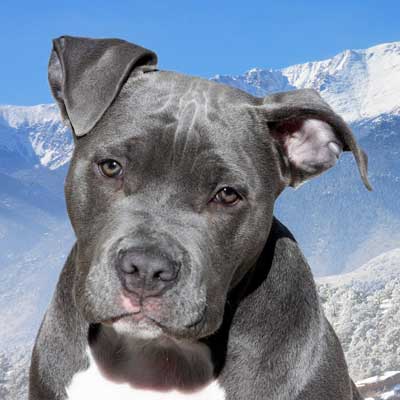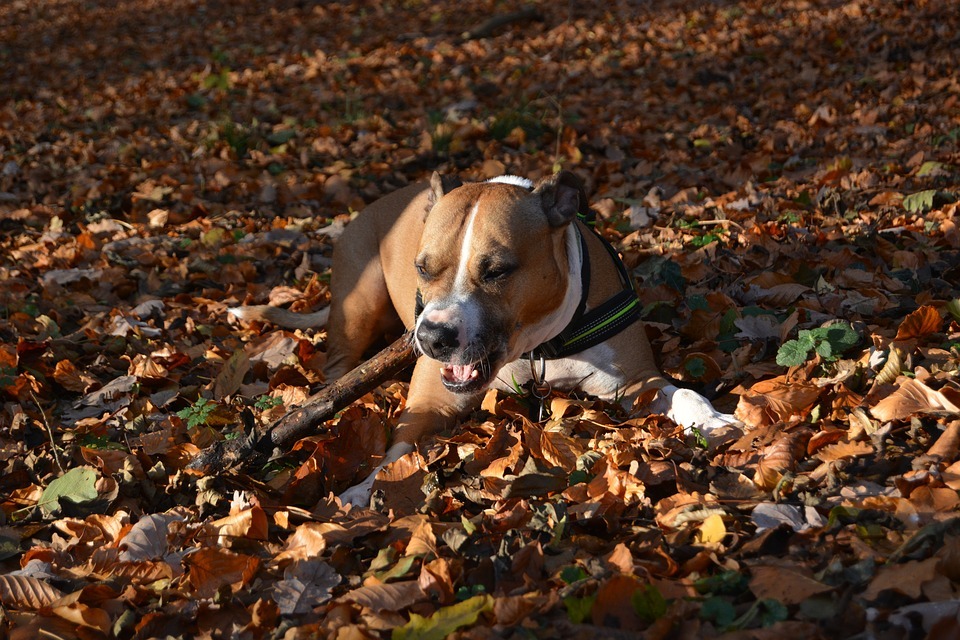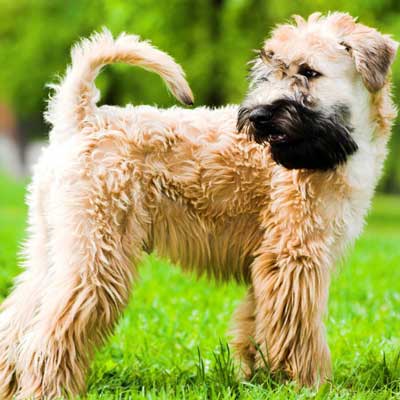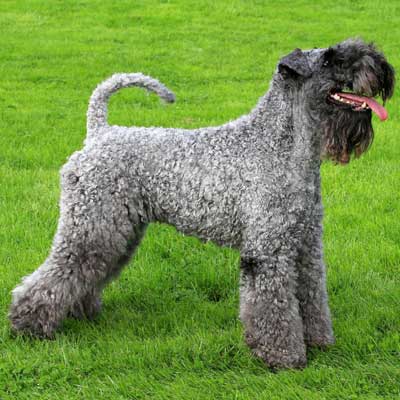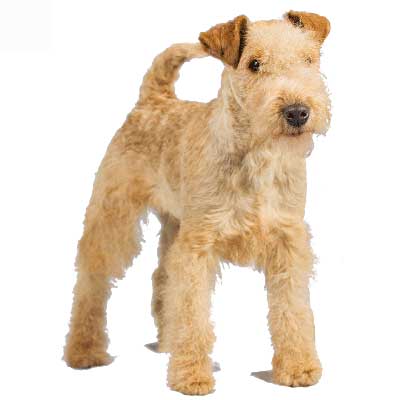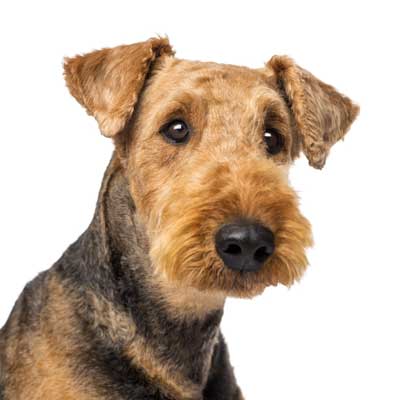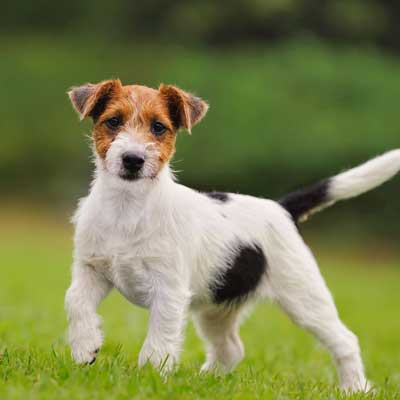American Staffordshire Terrier
Nice and well balanced, it is a family dog
-
Head
Medium length, deep through. -
Head - Cranial Region
Skull: broad.
Stop: Distinct. -
Head - facial region
Nose: Definitely black.
Muzzle: Medium length, rounded on upper side to fall away abruptly below the eyes.
Lips: Close and even; no looseness.
Jaws/Teeth: Well defined. Under jaw strong and to have biting
power. Upper teeth to meet tightly outside lower teeth in front.
Cheeks: Very pronounced cheek muscles.
Eyes: Dark, round, low down in skull, set far apart. No pink
eyelids.
Ears: Set high. Cropped or uncropped, the latter preferred.
Uncropped ears should be short and held rose or half prick. Full
drop to be penalized. -
Neck
Heavy, slightly arched, tapering from shoulders to back of
skull. No looseness of skin. Medium length. -
Body
Topline : Back fairly short. Slight sloping from withers to rump with
gentle short slope at rump to base of tail.
Loins: Slightly tucked.
Chest: Deep and broad. Well sprung ribs; close together, deep in
rear. -
Tail
Short in comparison to size, low set, tapering to fine point;
not curled or carried over back. Not docked. -
Forequarters
Front legs straight, with large bones. Set rather wide apart to permit chest development.
Shoulders: Strong and muscular, with blades wide and sloping.
Pastern: Upright.
Forefeet: Of moderate size, well arched and compact. -
Hindquarters
Well muscled.
Hocks: Let down, turning neither in nor out.
Hind feet: Of moderate size, well arched and compact. -
Feet
Of moderate size, well arched and compact. -
Gait / Movement
Springy but without roll or pace. -
Coat - hair
Short, close, stiff to the touch, glossy. -
Coat - colour
Any colour, solid, particolour, or patched is permissible; but
more than 80% white, black and tan, and liver not to be encouraged. -
Size
Height and weight should be in proportion.
A height of about eighteen to nineteen inches (46 - 48 cm) at the shoulder for the male and seventeen to eighteen inches (43 - 46 cm) for the female to be considered preferable. -
Faults
Any departure from the foregoing points should be considered a fault and the seriousness with which the fault should be regarded should be in exact proportion to its degree and its effect
upon the health and welfare of the dog.
• Dudley nose.
• Undershot or overshot mouth.
• Light eyes.
• Pink eyelids.
• Tail too long or badly carried.

